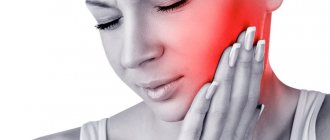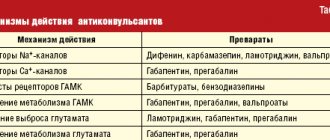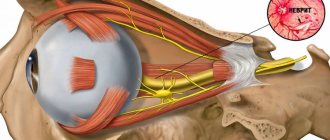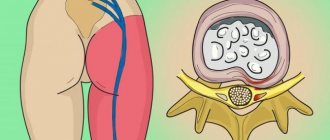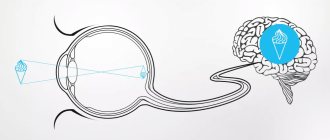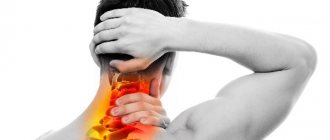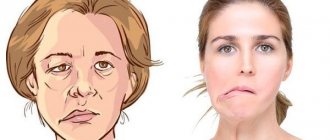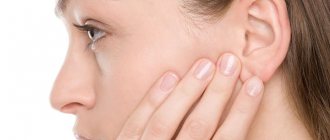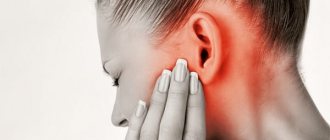The life of a modern person is associated with many unfavorable factors - stress, conflicts, poor environment, low-quality products, and little physical activity. The result of their influence is the development in the body of various functional and organic disorders, sometimes very severe. Such, for example, as neuritis .
This inflammatory disease of the peripheral nerves is characterized by paroxysmal pain, decreased or complete loss of sensitivity, as well as movement disorders including paresis and paralysis.
With mononeuritis, only one peripheral nerve is affected (ophthalmic, facial, radial, etc.), with inflammation of the nerves from one plexus, we talk about plexitis .
Neuritis is dangerous due to its complications. Particularly severe consequences of the disease include paresis, paralysis, and muscle atrophy.
1 Neuritis. Diagnosis and treatment
2 Neuritis. Diagnosis and treatment
3 Neuritis. Diagnosis and treatment
Symptoms
With neuritis, the nerve fiber is damaged, and therefore the functions suffer, the main ones being sensitive, motor and trophic, therefore the following symptoms are clinically noted:
- In the phase of irritation of the nerve fiber: pain, burning, feeling of “crawling goosebumps”, feeling “as if many needles are being pricked”.
- In the phase of loss of functions: decreased muscle strength, muscle atrophy, decreased reflexes, decreased sensitivity, tissue atrophy including skin, subcutaneous fat, muscles, bone tissue.
Surgery
Certain surgical procedures can help relieve neuralgia pain when the condition does not respond to treatment.
Examples of surgical procedures that may help treat neuralgia include:
Microvascular decompression : Helps remove an enlarged blood vessel affecting a nerve. The procedure involves placing a soft pad between the blood vessel and the affected nerve.
Stereotactic surgery : This is a non-invasive procedure that directs highly concentrated beams into the root of the damaged nerve. The radiation disrupts the transmission of pain signals to the brain.
Percutaneous balloon compression : This involves inserting a small balloon into the affected nerve. The balloon is inflated, causing controlled, deliberate nerve damage. This procedure prevents the affected nerve from sending pain signals to the brain. However, the effects of the procedure usually wear off after 1-2 years.
Causes
The main causes of neuritis:
- infectious (viruses, bacteria, their toxins);
- exposure to toxic factors
- metabolic disorders (diabetes mellitus, deficiency of vitamins B1 and B6);
- allergic reactions;
- injuries;
- oncological diseases;
- hereditary diseases;
- diseases of the spine leading to mechanical compression of the nerve trunk (intervertebral hernia, tunnel syndromes, etc.).
The mechanism of nerve damage when exposed to various unfavorable factors is associated with the launch of a cascade of inflammatory reactions. Swelling of the nerve trunk occurs, damage to the myelin sheath and subsequently to the axial cylinder, which in turn leads to the death of the nerve cell.
Make an appointment
Disease prevention
To prevent optic neuritis, it is recommended to give up bad habits, promptly treat infectious diseases, avoid eye and head injuries, and visit specialized doctors in the presence of chronic pathologies.
Article sources:
- Retrobulbar optic neuritis. Kukhtik S.Yu., Popova M.Yu., Tantsurova K.S. Bulletin of the Council of Young Scientists and Specialists of the Chelyabinsk Region, 2016
- Visualization of the optic nerve in the diagnosis and monitoring of retrobulbar neuritis. Yuryeva T.N., Burlakova E.V., Khudonogov A.A., Ayueva E.K., Sukharchuk O.V. Acta Biomedica Scientifica, 2011. p. 133-136
- Modern view on the problem of optic neuritis (systematic review). Krivosheeva M.S., Ioileva E.E. Saratov Scientific and Medical Journal, 2021. p. 602-605
- Results of treatment of optic neuritis. Latypova E.A. Saratov Scientific and Medical Journal, 2021. p. 875-879
Clinical picture of some individual nerves
- Trigeminal nerve – pain is sharp, piercing, in series, along one or several branches of the nerve.
- Facial nerve – muscle weakness on one side of the face. It is difficult to close the eye, the corner of the mouth on the affected side is drooping. When liquid food or drink is taken, everything comes out of the mouth.
- Diaphragmatic – feeling of lack of air, shortness of breath, hiccups.
- Median – impaired flexion of the hand, fingers I, II and III and decreased sensitivity on the palmar surface.
- Ulnar – weakness of the flexors of the IV, V and partly III fingers, decreased sensitivity on the palmar surface of the above fingers.
- Radial – impaired extension of the hand and fingers, decreased sensitivity in half of the back of the hand (I and II fingers). It is difficult to move the thumb away.
- External cutaneous nerve of the thigh (Roth-Bernhardt disease) – pain, numbness and burning along the outer surface of the thigh.
- Femoral – impairment of leg extension at the knee joint and hip flexion. Pain and sensory disturbances on the lower 2/3 of the anterior surface of the thigh, the anterior inner surface of the lower leg.
- Sciatic – pain along the back of the thigh and lower leg, weakness of the flexors and extensors of the foot.
- Olfactory – anosmia on one side (lack of sense of smell). When a nerve is irritated, foreign odors may appear.
- Visual – decreased acuity and loss of visual fields. The phenomena of nerve irritation manifest themselves in the form of photopsia (sensation of light, flames, sparks, etc.).
- Oculomotor – drooping of the upper eyelid (ptosis), limited mobility of the eyeball, dilated pupil, diplopia (double vision).
- Block - restriction of the mobility of the eyeball downwards and outwards.
- Auditory – hearing loss, often accompanied by a feeling of noise or ringing in the ear.
- Glossopharyngeal - twitching pain in the tonsils, root of the tongue, pharynx and taste disturbances in the back third of the tongue, impaired salivation and swallowing.
- Wandering – manifested by disturbances in swallowing and speech. On the affected side, the soft palate is lowered, the uvula is deviated to the healthy side. There are also disturbances in the functioning of internal organs - bradycardia, shortness of breath, motility disorders of the esophagus, stomach and intestines (spasms), etc.
- Additional – difficulty turning the head in the healthy direction, the head is tilted towards the affected nerve, the shoulder is lowered.
- Tibial – the foot is extended, but the patient cannot bend it. Cannot stand on toes. Sensitivity is reduced along the back of the lower leg and on the sole.
- Peroneal – the impossibility of standing on the heels and straightening the foot, it hangs down. Sensitivity is reduced on the outer surface of the lower leg and the back of the foot.
- Intercostal nerves – pain in the intercostal space, often radiating into the chest, simulating pain in the heart, chest, lungs, and stomach. Often, pain in the paravertebral muscles is detected at the level of the thoracic spine.
What is the facial nerve?
The trigeminal nerve, also known as the facial nerve, is the largest of the twelve cranial nerves. It originates in the ear, after which it branches, the first path reaches the frontal part, the second is located at the jaw. The nerve goes around almost the entire surface of the human face; it literally controls it.
Every person has two facial nerves - one on each side of the head. It is in contact with other cranial nerves and has supersensitive fibers.
Doctors divide the disease into two types - primary and secondary. The primary one manifests itself as a complication from a cold, in this case the normal nutrition of the nerve is disrupted. Secondary occurs with severe intoxication against the background of inflammatory or infectious diseases, as well as tumor processes.
Diagnosis of neuritis
The symptoms of neuritis are in many ways similar to the clinical manifestations of various diseases, including non-neurological ones. Therefore, the doctor should conduct a thorough differential diagnosis to make an accurate diagnosis.
Primary diagnosis consists of a thorough collection of patient complaints, identification of possible preceding factors, and direct examination of the patient. Most symptoms of neuritis are specific, so depending on their severity, the doctor can make a preliminary diagnosis.
Stimulation and needle electroneuromyography are used to diagnose peripheral nerve damage. This study makes it possible to answer the questions - which nerve is damaged, in what place it is damaged, what percentage of nerve damage, as well as give a prognosis for its recovery and monitor its recovery.
Diagnostic methods
Electroneurography is used to measure the speed of passage of nerve impulses through the fibers of peripheral nerves from their exit point to the nerve endings in ligaments and muscles. The technique allows you to determine the damaged nerve, determine the location and extent of damage, and identify the severity of the process.
Electromyography – used to study the bioelectrical activity of muscles. This method allows us to answer the question: what is the problem - damage to the nerve or damage to the muscle itself? EMG allows for differential diagnosis of neuropathy with muscle pathology (myasthenia, myotonia, myoplegia, polymyositis).
Ultrasound is a method for diagnosing damage to peripheral nerves. Evaluates changes in nerve diameter, continuity, and deterioration of sound conduction. Ultrasound clearly shows swelling of the nerve trunk and surrounding tissues
MRI – visualizes nerves and soft tissue structure, detects malignancies and provides information about muscle atrophy and nerve damage. With the help of MRI diagnostics, it has become possible to detect nerve damage in areas that are difficult to examine using electrodiagnostics or ultrasound.
Make an appointment
Classification and stages of disease development
Depending on the affected area:
- Intrabulbar (intraocular) neuritis, optic papillitis. This is an inflammation of the intraocular part (disc) of the optic nerve. More often develops in children.
- Retrobulbar neuritis. Damage to the nerve section lying between the eyeball and the optic chiasm. Forms of retrobulbar neuritisSource: Retrobulbar optic neuritis. Kukhtik S.Yu., Popova M.Yu., Tantsurova K.S. Bulletin of the Council of Young Scientists and Specialists of the Chelyabinsk Region, 2021: axial - a bundle of axons passing in the optic nerve is involved in the pathological process;
- peripheral - inflammation covers the nerve sheaths and spreads deep into the nerve trunk with the formation of a large amount of exudate under the sheaths;
- transversal - the process affects all layers of the optic nerve.
According to the etiology of the lesion:
- infectious:
- parainfectious (post-vaccination, after acute respiratory viral infections);
- demyelinating;
- ischemic;
- toxic;
- autoimmune.
According to the severity of the flow:
- spicy;
- chronic.
According to the prevalence of the lesion:
- mononeuritis – inflammation of one nerve (the vast majority of cases);
- polyneuritis – involvement of both optic nerves in the process (less than 1% of cases).
Treatment of neuritis
Treatment must be comprehensive. It is necessary to fight both the damaging factor and restore the damaged nerve trunk.
In treatment I use the following groups of drugs:
- Vascular;
- Anti-inflammatory;
- B vitamins;
- Improving the conduction of impulses along the nerve, etc.
Non-drug treatment methods are also used:
- Acupuncture - exposure to biologically active points of the skin leads to signal transmission along the nerve trunk to the spinal cord and brain, resulting in a complex cascade of reactions, which includes improved blood circulation, release of biologically active substances, and hormonal response, which in turn accelerates restoration of nerve fiber.
- Physiotherapy is designed to locally influence reflex zones. The main effects achieved after physiotherapy are: analgesic, anti-inflammatory, antispasmodic, fibrinolytic.
- Massage (improves microcirculation, reduces swelling).
- Therapeutic exercise (by working out muscle groups using a feedback system, the recovery period is accelerated).
To relieve pain and accelerate the recovery of nerve fibers, local injection techniques are used - therapeutic and diagnostic blockades, pharmacopuncture - with various mixtures of drug solutions, if necessary, together with ultrasound navigation. Due to the local administration of drugs (vitamins, anti-inflammatory drugs, anesthetics), it is possible to quickly relieve pain, reduce swelling and the inflammatory reaction, and restore the nerve trunk.
The treatment program for this disease at the Bone Clinic may include:
Shock wave therapy
More details
PRP therapy
More details
Acupuncture administration of ozone
More details
Teraquantum therapy
More details
Interference therapy
More details
Causes of inflammatory damage to the trigeminal nerve
Factors contributing to inflammation of the trigeminal nerve are:
- surgical interventions on the jaw bones;
- fractures of the base of the skull, lower and upper jaws;
- tumors;
- complex tooth extraction;
- hypothermia;
- surgery on the maxillary sinus;
- improperly administered anesthesia;
- incorrectly performed dental prosthetics;
- metabolic disorders;
- the presence of foreign bodies that irritate the nerve trunk or injure nerve endings;
- bacterial or viral infection;
- various types of intoxication of the body;
- hypovitaminosis;
- weakening of the immune system.
Blog
Neuritis is a common nerve disease. It is characterized by pain, as well as a number of other complications, including loss of sensitivity, paralysis, etc. Depending on the affected nerve, several types of neuritis are distinguished.
Optic neuritis
This disease is associated with inflammation of the optic nerve. The main causes of the development of optic neuritis are various infections: influenza, dental diseases, sore throat. Other causes include: eye injuries and inflammatory processes in the brain; liver problems and diabetes; blood diseases and various types of allergies; smoking and alcohol abuse.
Modern treatment of optic neuritis involves taking anti-inflammatory drugs and antibiotics. To achieve an effect in treatment, you need to consult a doctor as soon as possible, who will prescribe diagnostic procedures, after which he will make a diagnosis and determine the course of treatment.
Among all types of pathology, one of the most common is optic neuritis, treatment of which, depending on the diagnostic results, may include therapy: vitamin therapy, using antispasmodics, detoxification, etc. If you start the course of treatment on time, the result will not be long in coming, in in particular, normal eye functions can be restored.
If it is too late to see a doctor, neuritis will cause serious harm to visual functions and destroy cells, and this can lead to such a serious complication as optic nerve atrophy. Therefore, it is very important to contact a specialist in a timely manner who will prescribe effective treatment.
Facial neuritis
Another common disease is facial neuritis. Treatment of pathology should begin as early as possible to prevent the development of complications. The disease affects the nerve responsible for the facial muscles, which leads to their weakness and decreased (or absent) movements.
There are several characteristic signs by which facial neuritis can be recognized. Symptoms: pain behind the ear and smoothing of the nasolabial fold; violation of facial asymmetry; dysfunction of facial muscles (difficulty smiling, raising eyebrows, etc.).
Other symptoms characteristic of a disease such as facial neuritis include difficulty closing the eyelids or moving the lips (for example, it is difficult to stretch the lips with a tube). One of the features of the pathology is a clear clinical picture, so usually the doctor quickly makes a diagnosis (but if necessary, an MRI, computed tomography, etc. is performed to exclude other diseases).
Various diseases and injuries lead to the development of this type of pathology, including diseases associated with metabolic disorders. Neuritis can be triggered by a genetic predisposition.
A doctor can easily identify neuritis of the facial nerve. Treatment begins immediately to prevent the development of complications. The course of prescription depends on the general condition of the patient. In addition, the specialist looks at the main symptoms of facial neuritis, after which he prescribes special medications (including corticosteroids), and also gives other recommendations.
Brachial neuritis
When the spinal and cervical nerves are damaged, brachial neuritis occurs. Treatment of the disease is based on complete rest of the patient (especially regarding the limb affected by the pathology). For this purpose, the limb is fixed with a splint and bent. To keep the hand in this state, a special bandage is used. Then the neurologist prescribes medications and physical therapy.
The disease is characterized by severe pain and decreased mobility of the arm. In some cases, neuritis can cause partial loss of sensation in the limb: the inability to move the fingers or perform simple flexion movements of the hand. All this can lead to muscle atrophy.
Surgical treatment of brachial neuritis allows achieving effective results. The main drugs prescribed to the patient are non-steroidal anti-inflammatory drugs; they are applied to the areas of the shoulder where pain occurs (orally or subcutaneously).
The main symptoms of the pathology: loss of sensation in the shoulder and forearm; weakening of the shoulder muscles and difficulty bending the elbow; impaired fine motor skills and loss of sensation in the fingers.
There are two main types of brachial neuritis: lower and upper; depending on the pathology, symptoms may differ. The doctor will make an accurate diagnosis by conducting an examination and prescribing a diagnosis for the patient (ultrasound, X-ray, MRI and other procedures may be prescribed at the discretion of the specialist).
Trigeminal neuritis
Thanks to modern techniques, treatment of trigeminal neuritis allows you to quickly overcome the disease. This pathology is characterized by inflammation of the trigeminal nerve, which causes severe pain in the facial area. The disease is quite common; in total, about 1 million people suffer from this type of neuritis in the world. Women over the age of forty are at risk.
What causes the development of the trigeminal nerve? Let's highlight the main reasons:
- meningitis and various injuries;
- consequences of concussions;
- viral infections and herpes;
- colds, etc.
Bacterial infections, multiple sclerosis, long exposure to cold - all this also leads to a pathology such as trigeminal neuritis. treatment is prescribed by a doctor who focuses on the general condition of the patient and diagnostic results.
The main symptoms of trigeminal neuritis are severe pain in the face (sometimes so painful that the patient cannot find a place to rest and suffers from insomnia). The pain may be cyclical, affecting the lower face or areas around the eyes and nose. In different cases, pain occurs at different frequencies - hourly or once a day.
To stop the attacks, you need to urgently start treatment by contacting a specialist. Our medical center uses various techniques, including conservative treatment, which helps eliminate symptoms and completely cope with the disease.
Auditory neuritis
Many patients are diagnosed with a type of pathology such as auditory neuritis. Treatment of the disease begins after the doctor makes an accurate diagnosis. The pathology develops due to inflammation of the auditory nerve, which leads to hearing problems. Most often, this type of neuritis affects older people. Let us highlight the most common symptoms of auditory neuritis:
- hearing problems are a key symptom; if treatment is not started in time, neuritis will continue to progress, which can lead to complete hearing loss;
- noise and ringing in the ears - patients often complain of such symptoms characteristic of advanced neuritis, so if you see a doctor right away, these symptoms can be avoided;
- dizziness, gait disturbance (unsteadiness), frequent headaches, etc.
Among the patients, most of them are men (over the age of 55-60 years). One of the reasons for the development of the disease and the deterioration of the patient’s condition is a late visit to the doctor, since at this age many older people attribute deteriorating hearing to years, considering this a completely typical phenomenon.
If you start treating acoustic neuritis on time, you can relieve symptoms and stop the progression of the disease. Neuritis is diagnosed by audiometry (the doctor checks the quality of the patient's hearing by playing sounds at different frequencies). Patients are prescribed analgesics, diuretics, and special medications that help improve blood circulation.
